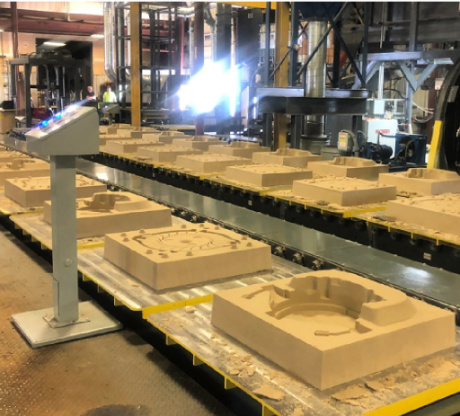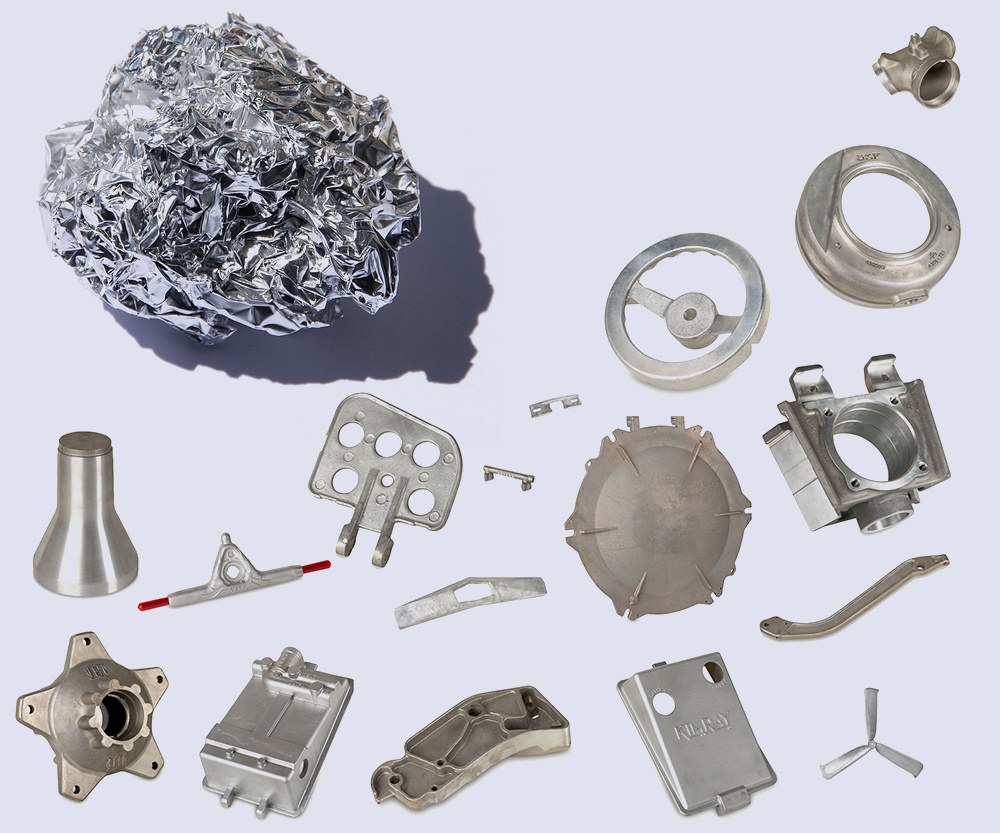How an Aluminum Foundry ensures precision castings
Wiki Article
Understanding the Role of Aluminum Foundry in Creating High-Quality Steel Products
Aluminum foundries are essential in the production of top quality steel items. They employ numerous casting techniques, such as sand and die spreading, to accomplish accuracy and durability. With rigorous quality assurance steps in position, these centers guarantee that their items fulfill industry standards. As markets advance, the role of Aluminum foundries remains to adjust. This questions regarding future innovations and sustainability practices that may redefine their effect.The Aluminum Spreading Refine: Technologies and methods
The Aluminum casting procedure has progressed significantly, including different strategies and innovations that improve performance and item top quality. Traditionally, techniques such as sand casting and pass away spreading were primary; nevertheless, improvements have actually introduced processes like investment casting and low-pressure die casting. These innovations enable producers to achieve elaborate designs and tighter tolerances, reducing product waste and boosting total efficiency.Moreover, the assimilation of computer-aided design (CAD) and simulation software enables for even more exact modeling and screening, making certain that possible concerns are determined early in the production cycle. In addition, advancements in alloy formulations lead to improved mechanical residential properties and rust resistance
These developments not only streamline manufacturing but additionally promote sustainability by minimizing power usage and exhausts. As the market proceeds to embrace brand-new technologies, the Aluminum spreading process stays a vital part in producing high-quality metal items that meet varied market demands.
Applications of Aluminum in Different Industries
Aluminum's adaptability and favorable residential properties make it an important product across different sectors. In the automobile industry, Aluminum is extensively utilized for its lightweight features, adding to enhanced gas performance and performance. The aerospace industry likewise advantages, as light weight aluminum's high strength-to-weight proportion enhances aircraft style while keeping safety and security standards.In building, Aluminum is preferred for its durability and resistance to rust, making it excellent for window frames, roof, and structural elements. The product packaging industry leverages light weight aluminum's non-toxic nature and recyclability, specifically in food and beverage containers, making certain safety and sustainability.
Furthermore, the electrical industry employs Aluminum for its excellent conductivity in electrical wiring and transmission lines. The durable goods market utilizes Aluminum in products ranging from kitchen area utensils to electronics, emphasizing its adaptability. Aluminum plays a vital role in enhancing functionality, efficiency, and sustainability across diverse applications.
Advantages of Using Aluminum Over Various Other Steels
While numerous steels are employed in different applications, Aluminum stands out because of its one-of-a-kind combination of homes that use several advantages over various other materials. Its light-weight nature considerably decreases transportation costs and power intake, making it perfect for industries such as auto and aerospace. Aluminum's exceptional deterioration resistance boosts longevity, expanding the life of items and reducing maintenance demands. In addition, it exhibits high thermal and electric conductivity, making it suitable for electric and thermal monitoring applications.The steel's malleability allows for intricate shapes and elaborate designs, providing adaptability in producing processes. Light weight aluminum is 100% recyclable without loss of top quality, advertising sustainability and reducing environmental influence. These qualities, combined with its relatively inexpensive compared to other steels, position Aluminum as a recommended option throughout numerous industries. Overall, the advantages of Aluminum contribute to its enhancing popularity in the production of high-quality steel products

Quality Assurance Actions in Aluminum Foundries
Quality control steps play a crucial duty in the Aluminum Foundry procedure, guaranteeing that the final products meet rigorous industry criteria and client assumptions. These steps commonly start with material evaluation, where raw Aluminum is assessed for purity and make-up. Once the spreading process begins, temperature control is vital; maintaining perfect molten steel temperature levels prevents defects such as porosity and shrinking.Additionally, non-destructive testing (NDT) techniques, including ultrasonic and radiographic examinations, are utilized to spot internal defects without damaging the spreadings. Visual examinations are also performed at numerous phases to identify surface imperfections.
Furthermore, adherence to established high quality management systems, such as ISO standards, is necessary for read more preserving uniformity and traceability throughout the production process. Normal audits and worker training on high quality criteria add to a general society of quality, ensuring that the products not just fulfill however go beyond customer expectations in efficiency and durability.
The Future of Aluminum Foundries: Fads and Sustainability
As the Aluminum Foundry industry advances, emerging trends and a concentrate on sustainability are improving its landscape. Raising demand for lightweight and resilient products in sectors like automotive and aerospace drives development in Aluminum spreading techniques. Advanced technologies, such as expert system and automation, are enhancing manufacturing performance and accuracy while minimizing waste.Sustainability is ending up being an extremely important issue, triggering factories to apply green practices, including reusing Aluminum scrap and using renewable resource resources. The shift in the direction of circular economy principles urges shops to reduce environmental impact while meeting customer assumptions for lasting products.
In addition, regulative pressures are pressing the industry towards cleaner procedures, cultivating cooperation in between makers and ecological organizations. As these patterns merge, the future of Aluminum foundries will likely be characterized by a commitment to performance, sustainability, and high quality, guaranteeing their significance in an open market.
Often Asked Concerns
What Are the Environmental Impacts of Aluminum Foundries?
Aluminum foundries contribute to environmental influences through energy intake, greenhouse gas emissions, and possible air and water air pollution. In addition, mining bauxite for Aluminum can cause habitat destruction and dirt degradation, affecting neighborhood ecological communities.

Just How Do Shops Ensure Worker Security During Production?
Factories carry out rigorous security methods, including protective tools, air flow systems, and routine training. They carry out danger analyses and maintain security requirements to lessen hazards, ensuring a more secure working atmosphere for workers throughout the production process.What Accreditations Should a Light Weight Aluminum Foundry Have?
An aluminum Foundry should possess accreditations such as ISO 9001 for top quality administration, ISO 14001 for ecological monitoring, and OSHA conformity for safety requirements. These accreditations ensure adherence to sector guidelines and commitment to top quality and safety methods.Exactly How Does Aluminum Recycling Affect Foundry Procedures?
Aluminum recycling significantly boosts Foundry procedures by offering a cost-efficient resources source, lowering energy intake, and lessening ecological impact - Aluminum Castings. It additionally encourages lasting techniques, permitting factories to preserve competitiveness in a swiftly advancing marketWhat Prevail Flaws in Aluminum Castings?
Typical problems in Aluminum castings consist of porosity, shrinking, additions, and surface blemishes. These concerns can occur from improper mold and mildew layout, insufficient pouring techniques, or contamination throughout the melting and spreading procedures, influencing general product quality.
Report this wiki page